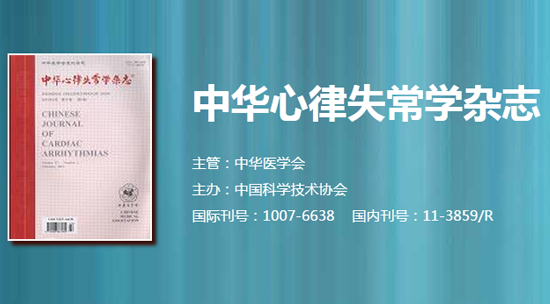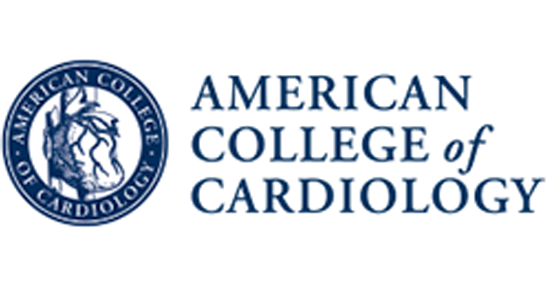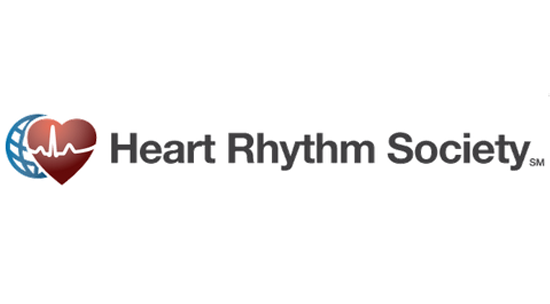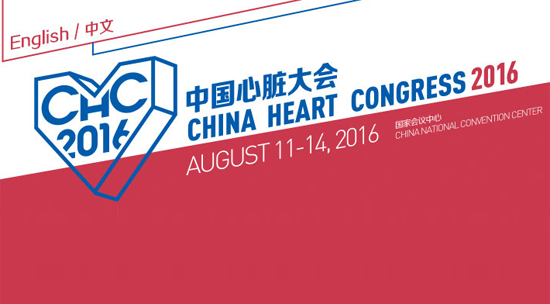HeartRhythm主编—陈鹏生教授语音速递(八月刊 英文版)
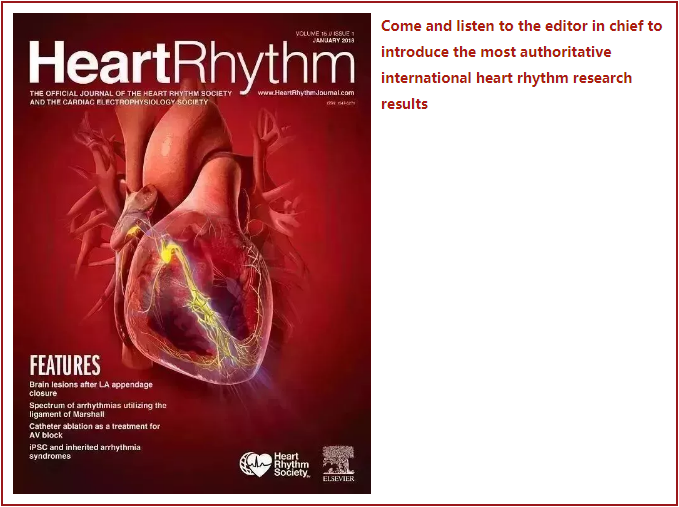

Peng-Sheng Chen
Hello, this is Dr. Peng-Sheng Chen, the Editor-in-Chief of Heart Rhythm. I am summarizing the August issue of the journal.
The editor’s choice is an article titled “Cardiovascular exercise as a treatment for postural orthostatic tachycardia syndrome: a pragmatic treatment trial”. The authors reviewed the medical records including autonomic function testing, symptom scores, and activities of daily living in individuals with POTS who were invited to participate in a 6-month outpatient cardiovascular exercise program. Among 77 invited, 48 participated and 43 of 77 of those completed. Twenty-nine of 77 did not participate and served as control group. After 6 months, 11 of 48 individuals in the treated group met heart rate criteria for POTS compared with 27 of 29 in the control group. Supine and standing heart rates decreased in the treated group compared with the control group. The frequency of syncope decreased in the treated group. An improvement in the perceived quality of life scale was detected in the treated group compared with the control group. The authors conclude that an outpatient exercise protocol significantly improved cardiovascular function and quality of life in patients with POTS.
Next is an articles titled “A novel Ventricular map of Electrograms DUration as a Method to identify areas of slow conduction for ventricular tachycardia ablation. The VEDUM pilot study”. Bipolar electrogram duration is indicative of local activation property and, if prolonged, is useful to discover areas of slow conduction favoring arrhythmias. The authors aimed to create a map of electrogram duration during the VT and called it the VEDUM map. They performed a prospective study involving 30 patients. They found that 22 of 24 VTs (88%) were interrupted during the first RF delivery at the area with the longest electrogram duration. The authors conclude that a VEDUM map is highly accurate in defining a conductive vulnerable zone of the VT circuit. The longest electrogram duration within the isthmus is highly predictive of rapid VT termination at the first RF delivery.
The next article is “Electrical storm in patients with left ventricular assist devices: Risk factors, incidence, and impact on survival”. This was an observational retrospective study of 730 patients. Among them, 78 (10.7%) developed electrical storm at a median of 269 days following surgery. Twenty-seven patients (34.6%) developed electrical storm within 30 days. Following electrical storm, 41% of patients died within 1 year. The authors conclude that electrical storm occurs in 1 in 10 patients after LVAD and is associated with higher mortality. Risk factors for ES include a history of ventricular arrhythmias, VT ablation, antiarrhythmic drug use, and perioperative mechanical circulatory support. Optimal management of electrical storm surrounding LVAD implant remains uncertain.
Next up is “Transvenous lead extraction in 1,000 patients guided by intraprocedural risk stratification without surgical backup”. This is a single-center retrospective study of consecutive 1000 patients who underwent elective transvenous lead extraction of a pacemaker or ICD lead for noninfectious indications. The risk of transvenous lead extraction is judged intraprocedurally. Transvenous lead extraction was successful in 914 patients, partially successful in 10, and failed in 76 patients. Only 1 patient developed intraprocedural cardiac tamponade requiring emergency pericardiocentesis. None of the patients developed hemothorax or required surgical intervention. The authors conclude that at experienced centers, intraprocedural risk stratification for transvenous lead extraction that avoids high-risk extraction techniques was successful in the majority of patients and can potentially help optimize the balance between efficacy, safety, and efficiency in lead extraction.
The following article is titled “The left bundle branch pacing compared to left ventricular septal myocardial pacing increases interventricular dyssynchrony but accelerates left ventricular lateral wall depolarization”. The authors compared differences in ventricular depolarization between nonselective His bundle pacing, nonselective left bundle branch pacing and LV septal pacing using ultra-high-frequency electrocardiography in 68 patients. They found that nonselective LBB pacing preserves physiological LV depolarization but increases interventricular electrical dyssynchrony. LV lateral wall depolarization during LV septal pacing is prolonged, but interventricular synchrony is preserved. If the most physiological pattern of LV activation is the goal of the implant procedure, then nonselective His bundle pacing and LBB pacing should be preferred over LV septal pacing because LV septal pacing results in slower LV lateral wall depolarization.
Coming up next is “Sporadic high pacing and shock impedance on remote monitoring in hybrid implantable cardioverter-defibrillator systems: Clinical impact and management”. Sporadic high impedance values without other anomalies detected by remote monitoring of hybrid cardiac implantable electronic device systems have been described recently. The clinical significance and related hazard of this phenomenon are not fully understood. The authors studied 92 patients receiving a hybrid ICD. Among them, 15 (16.3%) had high impedance alert on remote monitoring. Sporadic high impedance values were not associated with an adverse outcome or need for revision in all but 1 patient, who had continuously increasing pacing thresholds due to lead microfracture. The authors conclude that in the absence of clear signs of lead fracture or connection issues, sporadic high pacing and shock impedance in hybrid implantable defibrillator systems can be safely managed by close follow-up.
The next paper is “Device-related Infection in De Novo Transvenous Implantable Cardioverter-Defibrillator Medicare Patients”. A retrospective cohort study was conducted using 100% Medicare administrative and claims data to identify patients who underwent de novo transvenous-ICD implantation between July 2016 to December 2017. Among 26,000 patients, 519 (1.9%) developed an infection within 720 days post implant. While more than half (54%) of infections occurred during the first 90 days, 16% of infections occurred after 365 days. Age <70 years, renal disease with dialysis, and complicated diabetes mellitus are predictors of infection.
Up next is “Electrophysiology studies for predicting atrioventricular block in patients with syncope: A systematic review and meta-analysis”. The authors searched various databases and found 10 reports containing 12 cohorts with 639 patients who met the inclusion criteria. The mean age was 69 ± 7 years; 35% ± 10% were women; and 85% of patients had bifascicular block. The mean prespecified His-to-ventricle interval criterion was ≥70 ms. In studies featuring surface ECG recordings, there were 7% patients who developed complete heart block compared with 29% in the studies featuring implantable cardiac monitor. The authors conclude that the negative predictive value of EP study in patients with syncope and bundle branch block is 0.71, sufficiently low to question its use.
The paper is followed by an article titled “Contrast-enhanced image-guided lead deployment for left bundle branch pacing”. Successful LBBP with a well-defined lead tip location by visualization of the tricuspid valve annulus in 20 patients was retrospectively analyzed to develop an image-guided technique to identify the LBBP target site. This technique was then prospectively tested in 60 patients who were randomized into 2 groups, one using the standard approach and the other using the image-guided technique. The results show that the procedural and fluoroscopic durations in the visualization group were significantly shorter than those in the standard group. The number of lead deployment attempts in the visualization group was lower than that in the standard group, and the proportion of left bundle branch potential recorded was higher. The authors conclude that using a visualization technique, the procedural and fluoroscopic durations for LBBP implantation were significantly shortened with fewer lead repositioning attempts.
The next article is titled “Tumescent local anesthesia versus general anesthesia for subcutaneous implantable cardioverter-defibrillator implantation”. The authors performed a prospective, nonrandomized, controlled, multicenter study of patients referred for S-ICD implantation. Tumescent local anesthesia was prepared using lidocaine, epinephrine, sodium bicarbonate, and sodium chloride. Results show that the in-room and procedural times were significantly shorter with tumescent local anesthesia. Pain was reported less frequently by patients who received tumescent local anesthesia. The use of opioids was significantly reduced in patients who received tumescent local anesthesia. The authors conclude that tumescent local anesthesia is an effective and safe alternative to general anesthesia in S-ICD implantation.
Next up is “Scar channels in cardiac magnetic resonance to predict appropriate therapies in primary prevention” .The study aims to analyze the role of imaging to stratify arrhythmogenic risk in patients with ICD for primary prevention. The authors included 200 patients with late gadolinium enhancement cardiac magnetic resonance (LGE-CMR) before ICD implantation for primary prevention. They found that scar characteristics analyzed by LGE-CMR are strong predictors of appropriate therapies in patients with ICD in primary prevention. The absence of channels and scar mass < 10 g can identify patients at a very low risk of ventricular arrhythmias in this population.
Coming up is “Utility of Cardiovascular Implantable Electronic Device (CIED)-Derived Patient Activity to Predict Clinical Outcomes”. Among 1500 patients enrolled in MADIT-RIT, CIED-derived patient activity was available in 1463 (98%). Patients in the highest quintile of activity (more active) had the highest rate of inappropriate therapy, 21% at 2 years, as compared to 7%-11% in the other 4 quintiles, a 1.75 times higher risk. However, patients with the lowest level of activity had a 2.02 times higher risk of mortality and an 82% higher risk of heart failure hospitalization. The authors conclude that high CIED-derived 30-day median patient activity predicted inappropriate therapy, while low patient activity predicted mortality and heart failure. Device-derived activity assessment could serve as a useful predictor of outcomes.
The next paper is “Left axis deviation in patients with non-ischemic heart failure and left bundle branch block is a purely electrical phenomenon”. Twenty-nine patients with nonischemic cardiomyopathies and LBBB underwent noninvasive electrocardiographic imaging (ECGi). Sixteen patients had a normal QRS axis whereas 13 patients had left axis deviation (LAD). Total activation times were longer in the LAD group due to delayed activation of the basal anterolateral region. LV activation in patients with LAD was from apex to base, in contrast to a circumferential pattern of activation in patients with normal axis. Both groups were comparable with regard to LV end-diastolic volume, LV mass and anatomic axis. The authors conclude that LAD in LBBB appears to be due to electrophysiological abnormalities rather than structural factors or cardiac anatomic axis.
Next up is “Clinical Outcomes of Catheter Ablation of Ventricular Tachycardia in Patients with Arrhythmogenic Right Ventricular Cardiomyopathy: Insights from the Johns Hopkins ARVC Program”. Among 116 patients included, there were 166 RFA procedures, 106 (63.9%) of which involved epicardial ablation. Cumulative freedom from VT after a single procedure was 68.6% and 49.8% at 1 and 5 years, respectively. Cumulative VT-free survival after multiple procedures was 81.8% and 69.6% at 1 and 5 years, respectively. VT burden per RFA was reduced after vs before ablation. Furthermore, VT burden per patient was reduced after last ablation vs before first ablation. Use of antiarrhythmic drugs decreased after ablation. The authors conclude that in ARVC patients, RFA provided good VT-free survival after a single procedure, with multiple procedures required for more sustained freedom from VT recurrence. Marked reduction in VT burden permitted discontinuation of antiarrhythmic drugs.
The following paper is titled “Dose response to nadolol in congenital Long QT Syndrome”. The purpose of this study was to explore dose response to nadolol on exercise test in LQTS patients in order to propose a more personalized therapeutic approach. Ninety-five patients were included in the study, and 337 stress tests under nadolol were analyzed. Twenty-one patients were overresponders, mostly LQTS1, and 20 were underresponders, mainly LQTS2. Forty-two patients had at least 3 stress tests under nadolol. There was a negative correlation between dose change and percentage of age-predicted maximum heart rate change. In conclusion, this study demonstrated a major variability of dose response to nadolol in patients with LQTS, thus underlining the need for a tailored dosage for each patient. Intraindividual analysis showed a relatively constant dose-response relationship, allowing guided dose adaptation after the first exercise test.
Next up is “Arrhythmogenic mechanisms of acute obstructive respiratory events in a porcine model of drug-induced Long-QT”. In sedated spontaneously breathing pigs, 75 seconds of intermittent negative upper airway pressure, or INAP was applied to simulate obstructive respiratory events. Ventricular electromechanical coupling was determined by the electromechanical window. The authors found that whereas QT interval increased during and decreased after INAP, electromechanical window shortened progressively throughout INAP and post-INAP periods. Short electromechanical windows were associated with increased occurrence of PVCs, which were potentiated in dofetilide pigs. Administration of atenolol prevented post-INAP electromechanical window shortening and decreased occurrence of PVCs. The authors conclude that transient dissociation of ventricular electromechanical coupling during simulated obstructive respiratory events creates a dynamic ventricular arrhythmogenic substrate, which is sympathetically mediated and aggravated by drug-induced LQT.
The following article is “A novel pathogenic role for galectin-3 in early disease stages of arrhythmogenic cardiomyopathy”. Arrhythmogenic cardiomyopathy (AC) is a myocardial disease due to desmosomal mutations whose pathogenesis is incompletely understood. RNA sequencing for differentially expressed genes was performed on the myocardium of transgenic mice overexpressing the Desmoglein2-N271S mutation before phenotype onset. Among 29 differentially expressed genes identified at early disease stages, lectin, galactoside-binding, soluble, 3 gene (GAL3) showed reduced cardiac expression in transgenic mice and in 3 AC patients who suffered sudden cardiac death without overt structural remodeling. Four rare missense variants of LGALS3 were identified in 5 human AC probands. These findings show that GAL3 plays a crucial role in early AC onset through regulation of Wnt/β-catenin signaling and intercellular adhesion.
Up next is “Direct in-vivo assessment of global and regional mechano-electric feedback in the intact human heart”. In 10 patients undergoing open heart cardiac surgery, LV afterload was modified by transient aortic occlusion. Increased ventricular loading reduced longitudinal shortening and shortened activation recovery interval, but changes were heterogeneous between cardiac segments. Increased regional longitudinal shortening was associated with ARI shortening and increased local ARI dispersion. At the whole organ level, increased mechanical dispersion translated into increased dispersion of repolarization. The authors conclude that Mechanoelectric feedback can establish a potentially proarrhythmic substrate in the human heart and should be considered to advance our understanding and prevention of cardiac arrhythmias.
The next article is titled “Flecainide-Induced QRS Complex Widening Correlates with Negative Inotropy”. The purpose of this study was to examine, in an intact porcine model, the effects of pulmonary and IV administration of flecainide on LV contractility and QRS complex width at doses that are effective in converting new-onset AF to sinus rhythm. Flecainide (1.5 mg/kg bolus) was delivered by intratracheal administration and compared to 2.0 mg/kg 10- minute IV administration and to 0.5 and 1.0 mg/kg 2-minute IV doses in 40 closed-chest, anesthetized Yorkshire pigs. The authors found that QRS complex widening in response to flecainide is strongly correlated with decrease in LV contractility. Rapid pulmonary or IV flecainide delivery reduces the negative inotropic burden while quickly achieving peak flecainide plasma concentrations levels associated with conversion of atrial fibrillation.
The above original articles are followed by two contemporary reviews titled “Cardiac Potassium Inward Rectifier Kir2: Review of Structure, Regulation, Pharmacology and Arrhythmogenesis” and “Segmental Non-Occlusive Cryoballoon Ablation of Pulmonary Veins and Extra-Pulmonary Vein Structures: Best Practices III”. Those two reviews were followed by a creative concept article titled “A Novel Approach to Mapping and Ablation of Septal Outflow Tract Ventricular Arrhythmias: Insights from Multipolar Intraseptal Recordings”. Dr George Van Hare wrote a Viewpoint titled “Radiofrequency ablation in the young” as the 8th entry in our series of articles to celebrate the 30th year of RF ablation. The final article is devoted to the memory of Dr Edward Carmeliet, January 4, 1930 to April 5, 2021, A pioneer in cardiac electrophysiology.
I hope you enjoyed this podcast. For Heart Rhythm, I’m the Editor-In-Chief, Dr. Peng-Sheng Chen.
